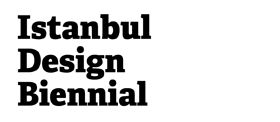From the pages of NCR-01 comes a text from Adhocracy curatorial team member Pelin Tan.

What is the role of a design biennial if design and its attached discourse are overwhelmed in a city such as Istanbul, a contested urban space but also a city under the perverse light of global glamour. How can we use the biennial as a tool for generating critical discussion, and how would that discussion relate to the everyday life and politics of design? Being different from fairs or exhibitions, a biennial’s purpose is to bring a climate of stimulating concepts, to reveal the productive trans-local network of actors, and to create platforms for encounters and debate. However, we also know that such biennial structures often become “institutions” as part of the cultural consumption industry of cities, an element which can fall prey to exploitation by neoliberal governing.
This translates into satisfying the urban elites by using these events as tools that contribute to the urban marketing machine, and feeding the expanding glamorous bubble of Istanbul. There are several ways of exhibition making, thus curatorial practices– a critical awareness that shouldn’t function as a pedagogic or didactic tool but an instigator of potentialities and positioning by initiating rhizomatic self-reflexive networks, and introducing the “non-representable” or the “incomplete representation of form.” These would help.
Nowadays, at the urban and local level, Istanbul is facing controversial design projects initiated by the state and greater municipality. On the other hand, at the global scale, Istanbul’s critical discussion both on representation, and the form of design and architecture is completely backwards. Open-source and collaborative design practices, which are more in touch with everyday life, are nearly impossible. In the context of architecture and urbanism, Istanbul’s public spaces are getting privatized in the hands of either fictional historical construction, or gentrification via the introduction of new consumption spaces. Unfortunately, design remains as an instrumentalized element that justifies the conditions of exception. The projects which we’ve been witnessing emerge in the last years, such as state-led urban transformation projects for neighborhoods (in collaboration with TOKİ), the Galataport project in Tophane-Karaköy, the transformation of the Emek Cinema building, or the recently presented, upcoming project for Taksim Square are all initiated for the purpose of privatizing public space, adding new surveillance measures and transforming everyday life by reducing the collective imaginary. Instrumentilizing design via upside-down projects and reducing the potentialities of the city also affect our understanding of urban production. This neoliberal urban production influences directly any level or form of design. The craftsmen of Tophane who suffered the strong gentrification process of the area find themselves in a similar condition to that of small architecture offices, which are squeezed under huge generic architecture projects. The discontinuity between the shifts in manual labor and immaterial labor, the division of labor in design, and its growing distance from everyday life, lead us to re-think form and the means of production. For thinkers such as M. Lazaratto and R. Sennet, ‘networks’ are an important element of work dynamics and means of production. Labor, division of labor and subjectivity are redefined not only through the network itself but also through the rhizomatic expansion and reproduction of the network. Under the pressure of neoliberalism, analyzing critically the means of production and thus the conventional production of design might give us the ability to invent counter strategies and new gestures in design. Moreover, the role of the designer or the architect in a city like Istanbul remains ambivalent.
Under these conditions, the biennial can become a critical tool which can pursue with a research-based collaborative curatorial practice, the true resources and potentialities of Istanbul, many of which are under threat. These resources could be analyzed and presented within the reinvention of emancipatory networks– a level of understanding made possible by going beyond the Istanbul urban cliché or its identity based on the glamour bubble. This approach would lead us to rediscover forms of design networks, critical modalities on forms in everyday life, and perhaps also levels of advocacy as a moderator.
Recent biennials such as the Hong Kong + Shenzen Architecture, or the Gwangju Design biennials are examples of events which provide global discursive platforms and new analysis on the design form within the context of politics and socio-economical situations. Throughout their exhibitions, their critical climate goes beyond to understand spatial practices and potentialities, making them the foundation under any kind of design form or designer. Architect Nikoulaus Hirsh has described the recent global condition of Istanbul in the context of cultural industry as such: ‘’Istanbul has definitely moved on the map of the art and design world. Art and design have become triggers for urban transformation.” The stakes are high, therefore in the case of Istanbul, there is a choice to be made. Either the biennial can resemble and contribute to the glamorous bubble of urban marketing, or it can initiate scenarios for urban and design networks of the trans-local scale, allowing them to become actors of critical modality in design. This choice could mark the climate of thinking on design and architecture, and their role in society and politics.
– Pelin Tan
1- Maurizio Lazaratto, Gayrimaddi Emek / Immaterial Labor, Muhtelif guncel sanat dergisi / contemporary art magazine, Eds.Pelin Tan, Adnan Yıldız, Ahmet Öğüt, 2008, no.4, Autumn, Istanbul
2- Richard Senett, Karakter Aşınması: Yeni Kapitalizmde İşin Kişilik Üzerindeki Etkileri, Trans.Barış Yıldırım, Ayrıntı Pub., 2002, Istanbul (The Corrosion of Character: The Personal Consequences of Work in The New Capitalism, 1998)









Leave a Reply